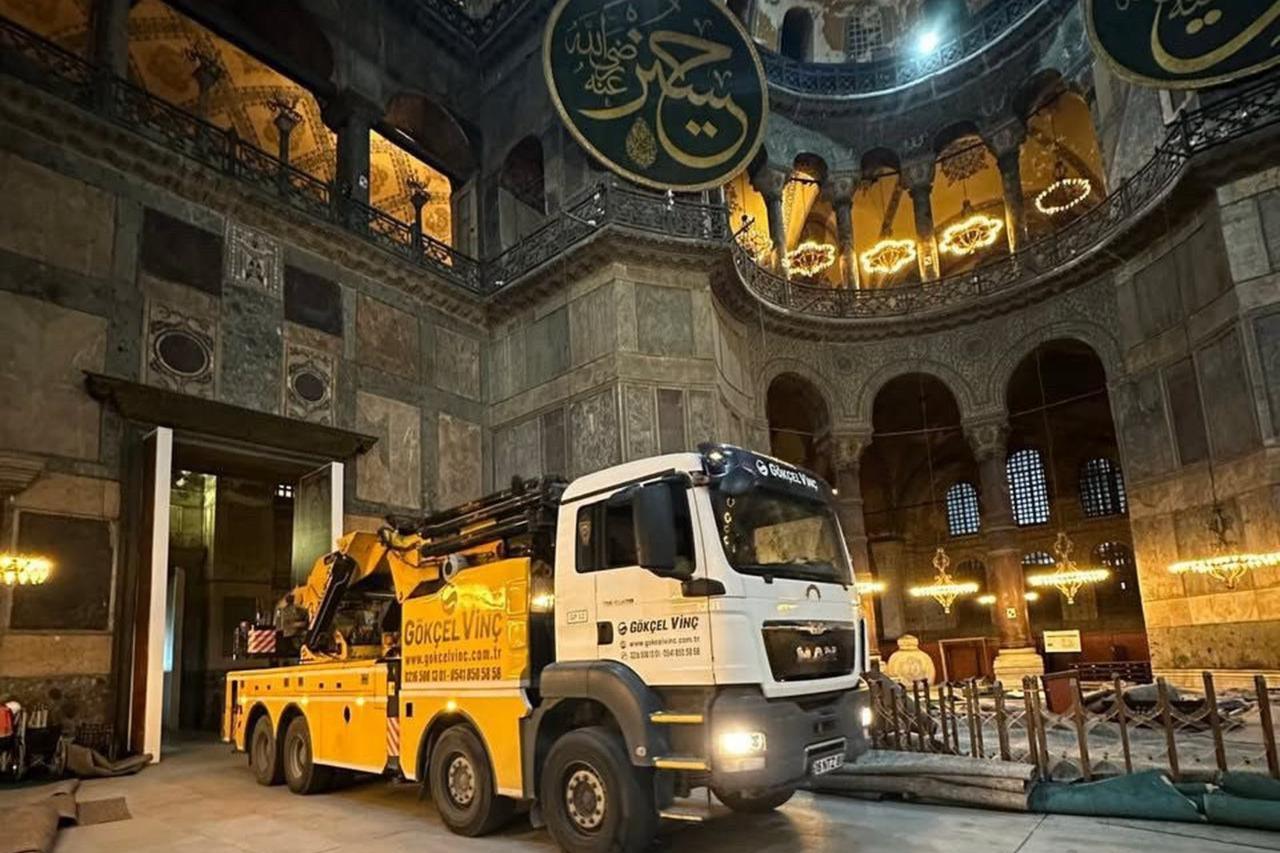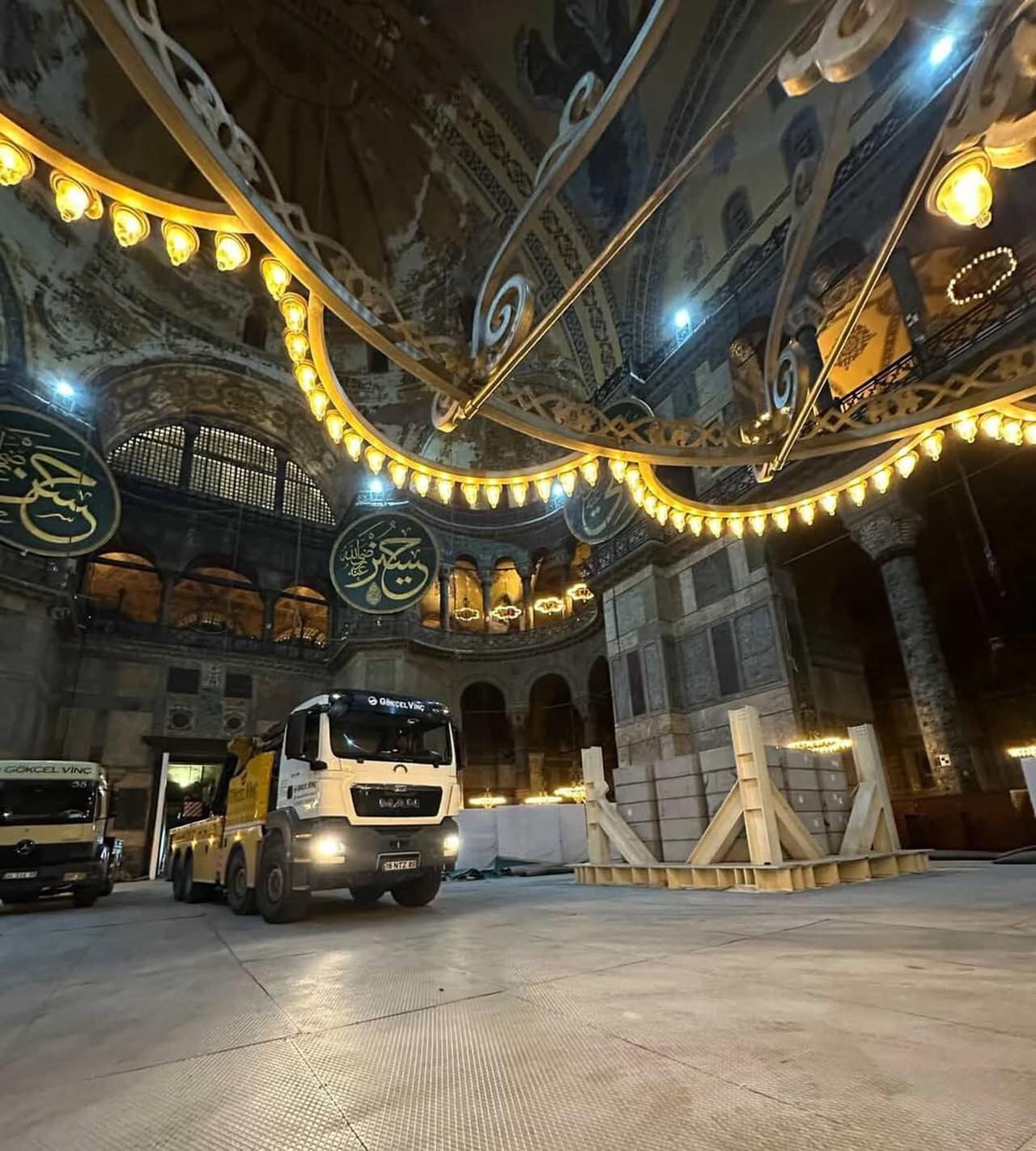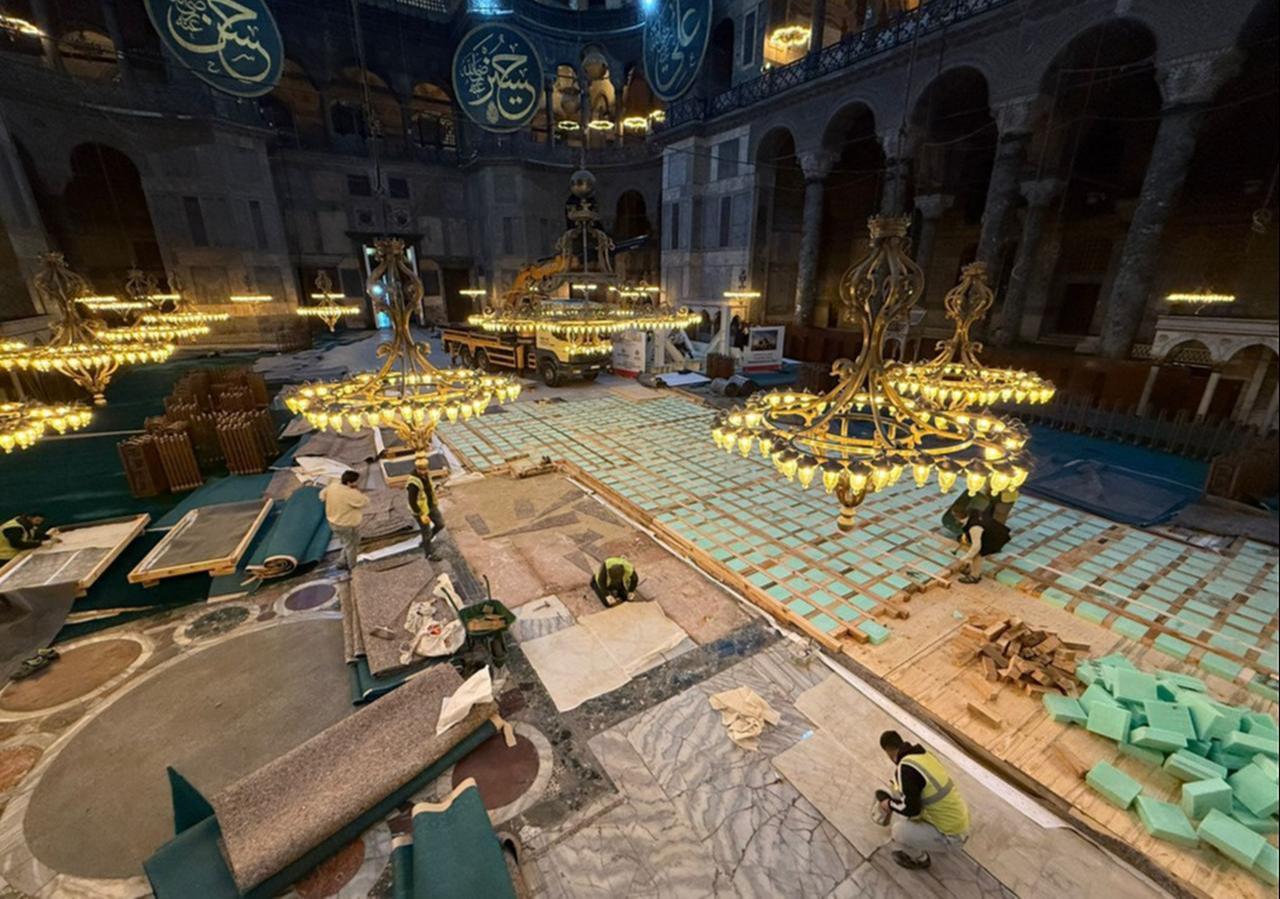
Turkish Culture and Tourism Minister Mehmet Nuri Ersoy on Tuesday publicly addressed concerns surrounding restoration efforts at the Hagia Sophia Grand Mosque, following public backlash over a heavy truck-mounted crane seen inside the historic site.
Ersoy said the vehicle was related to earthquake-strengthening measures and emphasized that the mosque’s original structure remains under protection.
Photos recently circulated on social media showed a heavy-duty crane truck parked on protective floor panels inside the Hagia Sophia, raising alarm over whether restoration teams were adequately safeguarding the building’s fragile flooring during the ongoing work.
The images sparked widespread debate and prompted the Ministry of Culture and Tourism to issue an official statement to clarify the situation.

Speaking at the “Traces of Time–Waqf Civilization” photography award ceremony hosted by the Directorate General of Foundations, Ersoy said, “Serious scientific studies are underway to preserve the Hagia Sophia’s UNESCO World Heritage status.”
He explained that the lead coverings of the mosque’s dome were renewed as part of the earthquake-resilience efforts.
“Earthquakes are a reality of our lives. We must be prepared,” Ersoy said. “Making Hagia Sophia and our other cultural heritage sites—some of which are thousands of years old—resilient against earthquakes is of vital importance.”

The minister added that the multilayered protection system on the ground had been carefully planned to ensure that the mosque’s original flooring would not be harmed. He also noted that restoration work is carried out only at night, beginning after the night prayer and concluding before morning prayer, to avoid disrupting worship.
In a prior statement shared on social media, Ersoy reaffirmed that the structural reinforcement work would continue without interfering with the mosque’s religious functions.
Describing the Hagia Sophia Grand Mosque as “1,486 years old,” Ersoy said both internal and external restoration efforts were ongoing.
According to the minister, “the main dome is entering the widest and most comprehensive restoration process in its history,” with efforts focused on making the structure more resistant to seismic activity while carefully preserving its historical and architectural integrity.
While initial attention was focused on the upper structure, the release of new photos has shifted public scrutiny to ground-level restoration practices, particularly the use of heavy vehicles within the site.